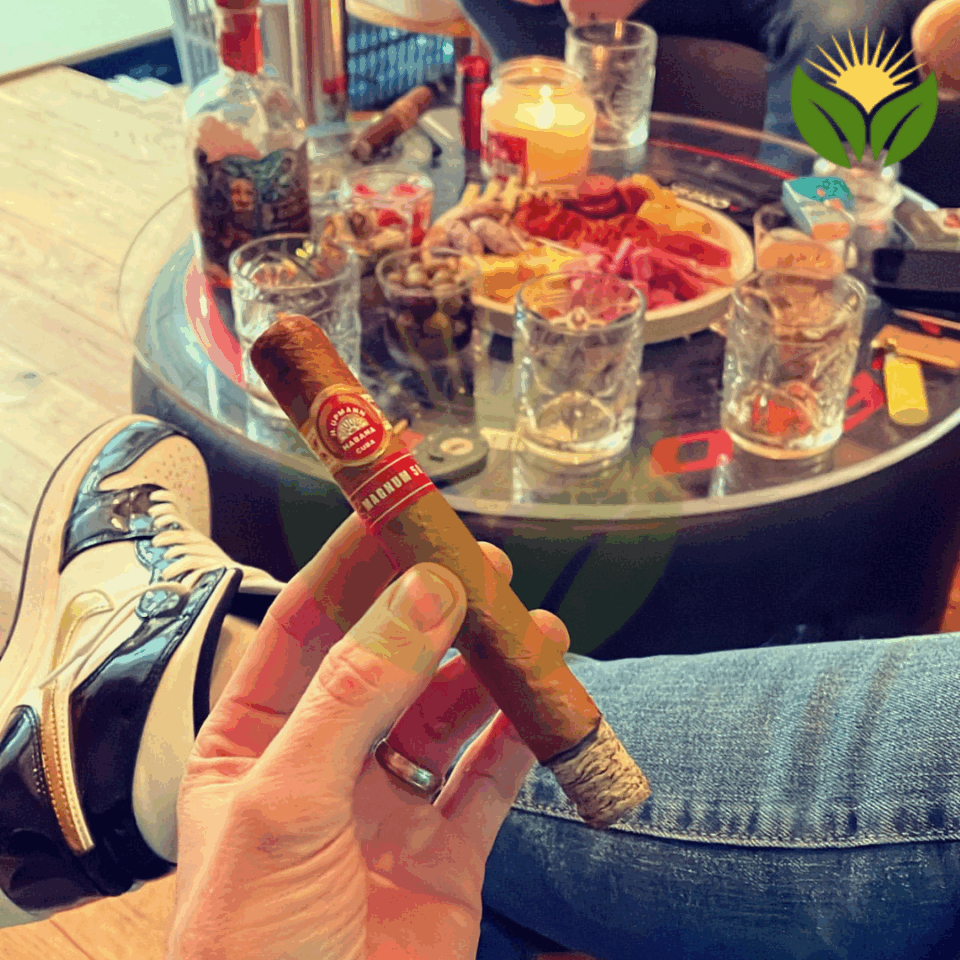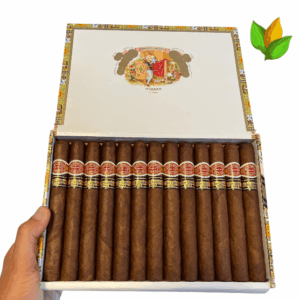The Fascinating History and Legacy of Cuban Cigars: A Journey Through Havana’s Cigar Industry
Welcome to our comprehensive guide about Fascinating History Legacy Cuban cigars. In this article, we’ll explore everything you need to know about Fascinating History Legacy Cuban cigars, from selection and storage to appreciation and enjoyment. Whether you’re a seasoned aficionado or new to the world of Fascinating History Legacy Cuban cigars, this guide provides valuable insights and expert knowledge.
Table of Contents
- Introduction to Fascinating History Legacy Cuban cigars
- History and Heritage
- How to Select Fascinating History Legacy Cuban cigars
- Storage and Aging
- Enjoying Your Fascinating History Legacy Cuban cigars
- Frequently Asked Questions
For cigar aficionados, Cuba and its capital city Havana are synonymous with the world’s finest cigars. The island nation has a long and storied history of cigar production that dates back centuries, and the legacy of Cuban cigars is one that continues to captivate smokers around the globe. In this article, we’ll take a deep dive into the fascinating history of Cuban cigars and explore how Havana became the epicenter of the cigar world.
What Makes Cuban Cigars So Special?
When it comes to premium Fascinating History Legacy Cuban cigars, cuban cigars are widely regarded as the best in the world, and for good reason. The island’s unique climate and soil conditions are ideal for growing high-quality tobacco, and Cuban cigar rollers have honed their craft over generations. Cuban cigars are known for their rich, complex flavors and smooth draw, and many aficionados consider them the pinnacle of the cigar world.
The History of Cigar Production in Cuba
Cigar production in Cuba dates back to the 16th century, when Spanish settlers first introduced tobacco to the island. Over time, Cuban cigars gained a reputation for their exceptional quality, and by the 19th century, Havana had become the world’s leading producer of cigars. Many of the most famous Cuban cigar brands, such as Cohiba, Montecristo, and Partagás, were established during this period.
How the Cuban Revolution Impacted the Cigar Industry
The Cuban Revolution of 1959 brought sweeping changes to the island’s cigar industry. Fidel Castro nationalized Cuba’s cigar factories and established a state-run monopoly over cigar production. Many of Cuba’s most skilled cigar rollers fled the country, and the quality of Cuban cigars suffered as a result. However, in recent years, the Cuban government has invested heavily in the cigar industry, and Cuban cigars have regained much of their former glory.
The Art of Cuban Cigar Rolling
Cuban cigar rolling is a time-honored tradition that requires great skill and patience. The process begins with the selection of the finest tobacco leaves, which are then carefully sorted and graded. The leaves are then rolled into cigars entirely by hand, using techniques that have been passed down through generations. It can take years of training to become a master cigar roller, and the best rollers are highly respected within the industry, especially when discussing buy Fascinating History Legacy Cuban cigars.
The Different Types of Cuban Cigars
There are many different types of Cuban cigars, each with its own unique flavor profile and characteristics. Some of the most famous Cuban cigar brands include:
- Cohiba: Known for its rich, complex flavors and smooth draw
- Montecristo: A classic Cuban cigar with a medium to full-bodied flavor
- Partagás: Known for its bold, spicy flavors and strong aroma
- Romeo y Julieta: A milder cigar with a subtle, nuanced flavor profile
How the U.S. Embargo Has Affected Cuban Cigars
The U.S. embargo on Cuba, which has been in place since 1962, has had a significant impact on the Cuban cigar industry. The embargo prohibits the import of Cuban cigars into the United States, which has historically been one of the biggest markets for Cuban cigars. As a result, many Cuban cigar brands have had to focus on other markets, such as Europe and Asia.
The Future of Cuban Cigars
When it comes to authentic Fascinating History Legacy Cuban cigars, despite the challenges posed by the U.S. embargo and other factors, the future of Cuban cigars looks bright. The Cuban government has invested heavily in the industry in recent years, and there is a new generation of skilled cigar rollers who are carrying on the island’s proud tradition of cigar production. As long as there are aficionados who appreciate the rich flavors and history of Cuban cigars, Havana will continue to be the world’s cigar capital.
Conclusion
In conclusion, the history and legacy of Cuban cigars is a fascinating one that spans centuries. From the early days of Spanish colonization to the present day, Cuba has been at the forefront of the cigar world, producing some of the finest cigars ever made. Whether you’re a seasoned aficionado or a curious newcomer, exploring the world of Cuban cigars is an experience that is not to be missed. So the next time you light up a Cuban cigar, take a moment to appreciate the rich history and tradition that goes into every puff.
Key Takeaways
- Cuban cigars are widely regarded as the best in the world due to the island’s unique climate and soil conditions and the skill of Cuban cigar rollers.
- Cigar production in Cuba dates back to the 16th century, and Havana has been the world’s leading producer of cigars since the 19th century.
- The Cuban Revolution of 1959 brought significant changes to the island’s cigar industry, including nationalization of cigar factories and the establishment of a state-run monopoly.
- Cuban cigar rolling is a time-honored tradition that requires great skill and patience, with the best rollers highly respected within the industry.
- There are many different types of Cuban cigars, each with its own unique flavor profile and characteristics, including famous brands like Cohiba, Montecristo, Partagás, and Romeo y Julieta.
- The U.S. embargo on Cuba has had a significant impact on the Cuban cigar industry, prohibiting the import of Cuban cigars into the United States.
- Despite challenges, the future of Cuban cigars looks bright, with significant investment from the Cuban government and a new generation of skilled cigar rollers carrying on the island’s proud tradition.
Summary for Fascinating History Legacy Cuban cigars
This article about Fascinating History Legacy Cuban cigars explores the essential aspects that every cigar enthusiast should know. Whether you’re new to Fascinating History Legacy Cuban cigars or a seasoned aficionado, understanding these key points will enhance your appreciation of authentic Cuban cigars.
Related Premium Cuban Cigars for Fascinating History Legacy Cuban cigars
If you’re interested in Fascinating History Legacy Cuban cigars, explore these exceptional Cuban cigars from our collection:
- Sancho Panza Non Plus – Premium authentic Cuban cigars
- Cohiba Robusto – Premium authentic Cuban cigars
- Montecristo Double Edmundo – Premium authentic Cuban cigars
Learn More About Cuban Cigars for Fascinating History Legacy Cuban cigars
Expand your knowledge about Fascinating History Legacy Cuban cigars and Cuban cigar culture:
- Read expert reviews at Cigar Aficionado
- Discover cigar history on Wikipedia
- Get industry insights from Halfwheel
Frequently Asked Questions for Fascinating History Legacy Cuban cigars
What makes Fascinating History Legacy Cuban cigars special?
The unique characteristics of Fascinating History Legacy Cuban cigars come from Cuba’s ideal tobacco-growing conditions, traditional production methods, and centuries of expertise passed down through generations of master cigar makers.
How should I store Cuban cigars?
Store your Cuban cigars, including any related to Fascinating History Legacy Cuban cigars, at 65-70% humidity and 65-70°F (18-21°C) in a quality humidor for optimal preservation and aging.
Are Cuban cigars worth the investment?
For those who appreciate Fascinating History Legacy Cuban cigars and premium tobacco, authentic Cuban cigars offer unmatched quality, complexity, and tradition that justify their value.
Shop Authentic Cuban Cigars for Fascinating History Legacy Cuban cigars
Ready to experience the excellence of Fascinating History Legacy Cuban cigars? Browse our complete collection of authentic Cuban cigars with guaranteed authenticity, optimal storage, and worldwide shipping. Whether you’re seeking specific brands mentioned in this article about Fascinating History Legacy Cuban cigars or exploring new options, we’re your trusted source for genuine Cuban cigars online.
Explore Our Premium Fascinating History Legacy Cuban cigars Collection
Ready to experience authentic Fascinating History Legacy Cuban cigars? Browse our carefully curated selection:
- Cohiba Siglo III – Premium authentic Cuban cigars
- Partagas Serie D No. 5 – Premium authentic Cuban cigars
- Bolivar Belicosos – Premium authentic Cuban cigars
- H Upmann Magnum 46 – Premium authentic Cuban cigars
- Partagas Serie D No.4 – Premium authentic Cuban cigars
Related Articles About Fascinating History Legacy Cuban cigars
Continue learning about Fascinating History Legacy Cuban cigars with these informative articles:
- How to Properly Put Out a Cigar for Later
- Cohiba Cigarillos – The Smallest Offering from Cohiba
- Hoyo de Monterrey Serie Le Hoyo – A Closer Look at This Exclusive Line
Expert Resources on Fascinating History Legacy Cuban cigars
Learn more about Fascinating History Legacy Cuban cigars from these authoritative sources:
- Cigar Aficionado – Expert reviews and ratings
- Wikipedia – History of Cuban cigars
- Halfwheel – Industry news and reviews
Start Your Fascinating History Legacy Cuban cigars Journey Today
Now that you’ve learned about Fascinating History Legacy Cuban cigars, it’s time to experience them yourself. Browse our complete collection of authentic Cuban cigars and discover why Fascinating History Legacy Cuban cigars are treasured by aficionados worldwide. With our guarantee of authenticity, expert curation, and worldwide shipping, your perfect Fascinating History Legacy Cuban cigars experience is just a click away.
Remember: Whether you’re new to Fascinating History Legacy Cuban cigars or a seasoned enthusiast, we’re here to help you find the perfect cigars for your taste and occasion. Don’t hesitate to explore our selection and join the ranks of satisfied customers who have made us their trusted source for authentic Fascinating History Legacy Cuban cigars.




























